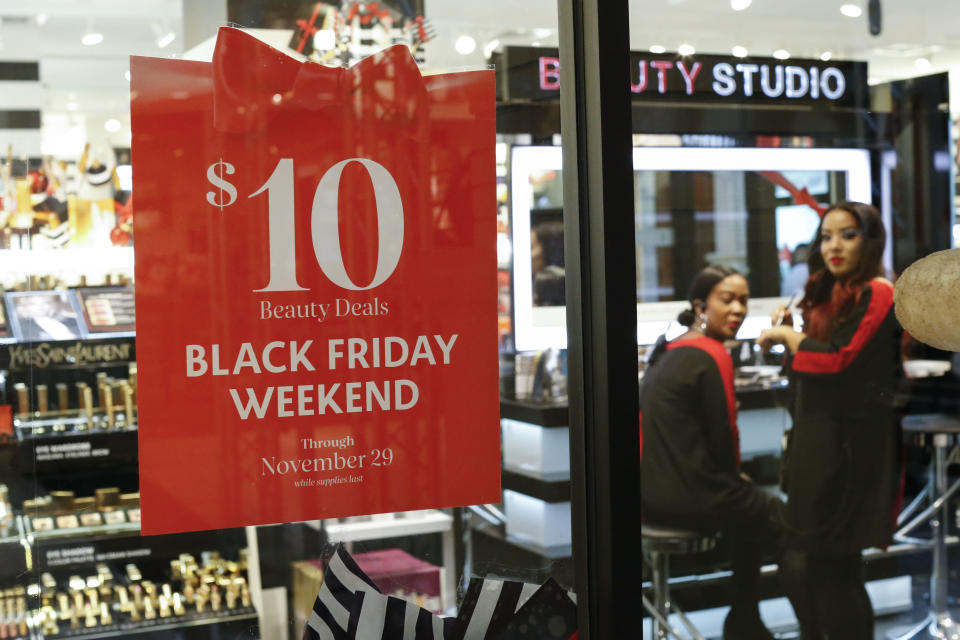Millennials are using brick-and-mortar stores as 'product playgrounds'
A new survey of 1,500 U.S. respondents indicated that convenience will actually drive shoppers into stores during this holiday season.
Brent Franson, CEO of Euclid, the retail research service that conducted the survey, said this is because millennials are using stores as “product playgrounds.”
“Retailers tend to think of stores only as places to buy; but for millennials, they’re really places to try,” Franson told Yahoo Finance, citing the fact that 21% of millennials almost always end up purchasing online after seeing an item in the store. “[Companies] need to get much smarter about this and stop worrying so much about where customers actually make the purchase.”
Although “it’s clear” that Amazon (AMZN) will dominate online this holiday season, Franson said, “brick-and-mortar retailers have a real opportunity to take a bite out of Amazon by offering what Amazon can’t: amazing, in-store experiences that customers enjoy.”

‘It’s the human element’
Among millennials, 48% reported shopping in-store at least once a week, more than any other generation. The Euclid survey also found that millennials are over 14% more likely than Gen Xers and 6% more than Baby Boomers to shop in stores on Thanksgiving and Black Friday.
“It’s the human element, that connection you don’t get from digital experiences,” Franson said about why in-store shopping is still relevant. “Experience and the need for instant gratification are the drivers here.”
Millennials will spend approximately $2,000 this holiday season, according to PwC’s 2018 Holiday Outlook.
There are two key ways that brick-and-mortar stores can stand out to millennials during the holiday season, Franson said. The first is to keep doors open on high traffic holidays, including Thanksgiving, Black Friday, and the day after Christmas.

Millennials are also more likely to shop in stores on Cyber Monday, but will still make 54% of their holiday purchases online. This ties into the second way to woo millennials: By “using convenience to encourage cross-channel interactions.”
“Stores should be places where people can grab the items they buy online or reserve for in-store pickup — or return the ones they bought but didn’t want,” Franson said.
‘Two words: Thanks, Netflix’
So why is it that convenience is the key?
“Two words: Thanks, Netflix,” (NFLX) he said. “Consumers have a nearly endless menu of high quality, accessible entertainment options, and shopping isn’t as high on the list anymore.”
Consequently, retailers “really have a big hurdle to overcome to entice people into stores. Convenient services, particularly coupled with other drivers like discounts and freebies, are the best way to get consumers off the couch and to the store.”

With the launch of Amazon Go stores, this provides the opportunity of creating the cross-channel experience. In the survey, 63% of millennials reported being excited at the idea of physical Amazon stores.
“This is the Amazon Age,” Franson said. “We want things curated, relevant, and in our hands as quickly as possible. We no longer have to tolerate time sucks or a lack of innovation. This is why we’re seeing digital natives like Casper and Bonobos opening stores as brick-and-mortar retailers work hard to refine their mobile and e-commerce shopping experiences.”
Without innovation, he said, consumers are quick to forget what they initially valued about a retailer. And in order to entice millennials, brands need to “create immersive and shareable experiences.”
Adriana Belmonte is an associate editor for Yahoo Finance. Follow her on Twitter @adrianambells.
Read more:
Follow Yahoo Finance on Twitter, Facebook, Instagram, Flipboard, LinkedIn, and reddit.

 Yahoo Finance
Yahoo Finance 
